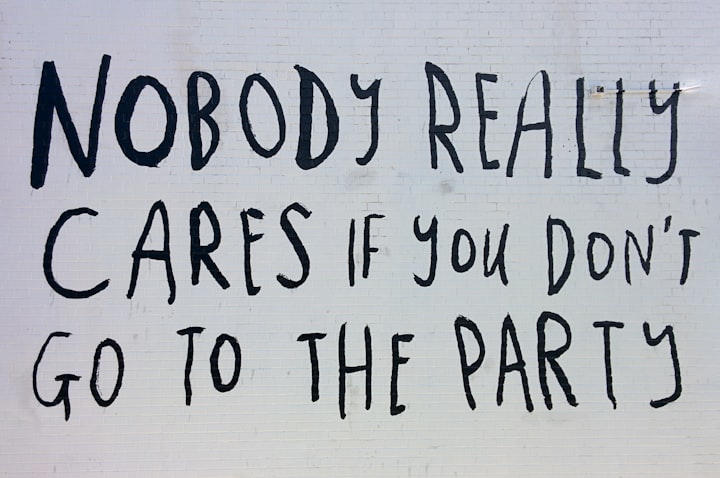Which way to the lucid dream?
Lucid dreamers are aware while dreaming that they are actually lying in their bed, fast asleep. Can this extraordinary state be used to improve one's abilities during sleep?

Just a moment ago, you flew around the world with mere arm strength, fought a saber-toothed tiger in the jungle, or accidentally did your weekly shopping in the supermarket without pants. Then the alarm clock rings, and you realize - sometimes disappointed, sometimes relieved - that it was all just a bizarre dream. It's different from lucid dreams, also known as lucid dreams. Here, sleepers are aware from the start that they are just traveling through an artificial world. More than one in two have experienced such a lucid dream at some point in their lives. Depending on the survey, about a quarter report regular lucid dreams, i.e. more frequently than once a month.
Many can even determine the content of their dreams themselves. This ability is then used quite differently, as a 2016 survey by Tadas Stumbrys and Daniel Erlacher with more than 500 participants revealed: just under half use it to fulfill wishes in their dreams that are difficult to realize in real life, such as special sexual adventures or a trip through space. Others use it to overcome nightmares and thus transform an initially frightening dream into a pleasant experience. A smaller proportion tries to tackle very specific problems in their sleep. These include, for example, athletes who want to hone their motor skills. In fact, there is evidence that purely mental training can improve the performance of athletes - even if they do not perform the relevant movements at all. Some now hope to be able to train even while dreaming and thus improve their performance literally overnight.
Dreams have their own dynamics
But this is more difficult than it sounds at first. "Even experienced lucid dreamers find that dreams often have their own dynamics," says Daniel Erlacher. The sports scientist is researching at the University of Bern on how athletes could improve their performance with the help of lucid dreams. What sounds like a literal dream job is actually a complicated undertaking. After all, lucid dreams cannot be easily reproduced in the laboratory. This is evidenced, for example, by a pilot study that Erlacher published together with his colleagues Melanie Schädlich and Michael Schredl in 2016. Experienced lucid dreamers were asked to practice throwing darts in a sleep lab - while they slept. But this presented the test subjects with some problems. Because even in a dream world, a dartboard and the corresponding darts must first be found. Of the 15 participants, nine succeeded in practicing darts while they slept. But only four of them managed to do so without any major distractions. Some of the others had to struggle with bizarre phenomena that they would hardly have encountered while awake. One of the test subjects, for example, dreamt of a doll that began to throw darts at him - trouble-free training looks different. In a subsequent performance check in the waking state, only those four subjects who were able to train distraction-free in their dreams had improved their performance. The other subjects were apparently overwhelmed by the task: What's easy in real life doesn't have to be in a dream. "After that, we tried to find tasks where you only need your own body," Erlacher recounts. "Even there, however, problems arise: Some could then suddenly no longer move their hands or had the feeling that their fingers were knotting."
So far, there is a lack of conclusive evidence that lucid dream training has a noticeable influence on the performance of athletes in the waking state. This is because studies with such a small number of subjects hardly allow any general conclusions to be drawn. The small sample size attests to the fact that dream research is a laborious undertaking. "To get even one data point, we spend an entire night in the sleep lab," Erlacher says. It's also not yet clear why some people find lucid dreaming so much easier than others. Certain differences seem to exist in the personality structure of dreamers, as suggested by an online survey published in 2017 by Mannheim-based sleep researcher Michael Schredl with nearly 2,500 participants. According to the "Big Five" personality test, the intense lucid dreamers showed a stronger openness to new experiences. In addition, however, they were characterized by a lower level of agreeableness, i.e. they appeared somewhat less willing to cooperate and considerate than the other respondents. However, such tests are based purely on self-descriptions. Moreover, the differences were rather moderate.
Other dream researchers focus their explanations on so-called metacognition. These include, for example, reflection and critical questioning of one's own consciousness. Exactly that could make also the crucial difference between conventional and lucid dreams. Normally, we take much of what happens in the dream world at face value - no matter how bizarre. Lucid dreamers, on the other hand, seem to be aware of their own mental state - very much like people usually are when they are awake. Sleep researcher Allan Hobson, therefore, sees the lucid dream as a hybrid between REM sleep and wakefulness. The REM phase stands for a special episode of night sleep that is characterized by rapid eye movements and high-frequency brain waves - incidentally, exactly the phase in which "ordinary" sleepers also experience most of their narrative dreams. Findings from the electroencephalogram (EEG) show that during a lucid dream, strong patterns of activity occur in the frontal area of the brain at a frequency of about 40 hertz - so-called gamma waves. According to Hobson, metacognitions that usually occur only during wakefulness may be related to these gamma waves.
Electrical stimulation can alter consciousness
In 2014, Frankfurt psychologist Ursula Voss published a groundbreaking study in which she attempted to experimentally create this special feeling of awareness during dreaming. To do so, she used what is known as transcranial alternating current stimulation (tACS). In this procedure, researchers attach electrodes to the scalp of their subjects, which can then influence brain activity using weak electrical impulses. Voss' team stimulated the subjects' brains while they were in REM sleep. Shortly thereafter, the experimenters woke up their subjects and asked them about their dream experiences.
Apparently, the electrical stimulation did indeed cause the participants to become aware that they were in a dream during dreaming - but only if the electrical stimulation occurred at a frequency of around 40 hertz. One of the study participants, for example, told of a comic-like animated lemon cake and a chat with the actor Matthias Schweighöfer. In the face of these strange events, he then realized that it could only be a dream. Many of the other test subjects also reported such experiences. The researchers were unable to achieve this effect with other frequency bands. This suggests that the 40-hertz frequency band could be specifically responsible for this metacognitive awareness. However, the dreams of Voss' test subjects may not be lucid in the strict sense: To what extent they were able to specifically influence their dream world is not clear from the study.
Until now, there has been no reliable method for specifically inducing lucid dreams. Many researchers rely on a tactic called "Wake Back to Bed," including Daniel Erlacher. Here, subjects are woken up in the sleep lab after about half of the usual sleep time and, after an hour awake, are allowed to indulge in another three to four hours of morning sleep. Depending on how strict the criteria for a lucid dream were, as many as 25 to 50 percent of his test subjects experienced a lucid dream using this method, Erlacher says.
The dream of the lucid dream from the net
But even beyond sleep labs, many tinker with their lucid dreams and exchange tips on the web for the perfect lucid dream experience. The lucid dream method seems to be particularly popular among athletes. "Particularly in technical-compositional sports, lucid dream training is popular - for example, among gymnasts or martial artists," says Erlacher. Many would use it to try out new tricks or practice old techniques under conditions that are hardly possible in real life - in slow motion, for example.
The fact that the effectiveness of these experimental training methods is by no means proven hardly seems to bother the athletes. In the meantime, a veritable market for lucid dream accessories has emerged. Resourceful minds have developed numerous devices that they sell via the Internet as "lucid dream machines". Some devices are based on an invention by lucid dream pioneer Stephen LaBerge from the 1980s. Here, the device transmits faint flashes of light during sleep, which are then supposed to serve as a "key stimulus" for a lucid dream experience. Several variations of this idea are now available for purchase: in the form of dream masks, helmets, pillows, or corresponding smartphone apps. Other devices work with electrical impulses, for example along the lines of Ursula Voss' study.
Daniel Erlacher considers these electro-stimulators downright dangerous - he says it cannot be ruled out that they trigger an epileptic seizure. He also thinks little of the electronic gadgets: "Most of them are based on the idea of detecting REM sleep. But many of these devices already fail at that; in the lab, you need polysomnography for that," he says, referring to the complex apparatus in the sleep lab. The devices based on LaBerge's model also often have problems sending the light signals at exactly the right intensity: "It's not easy to introduce a stimulus into the dream. If it's too weak, you don't notice it at all. If it's too strong, you wake up. The thalamus filters quite strongly. After all, the brain is supposed to be asleep."
About the Creator
AddictiveWritings
I’m a young creative writer and artist from Germany who has a fable for anything strange or odd.^^






Comments
There are no comments for this story
Be the first to respond and start the conversation.